The Shay Stadium
The home of professional sport in the town

The stadium is owned by Calderdale Metropolitan Borough Council.
It is the Home ground of FC Halifax Town who play Football in the National League, the 5th tier of English Football, and Halifax Panthers RLFC who play Rugby League in the 2nd tier of Rugby League Football.
'Shay' is derived from the old English word 'shaw', which means a small wood, thicket or grove. The two words are used interchangeably in ancient references to the property upon which the stadium was eventually constructed.
References to the name Shay have been traced as far back as 1462, when on 6 July of that year a wealthy local man named William Brodley recorded that upon his death, property belonging to him just west of Shaghe Lane should pass to his son, John Brodley. The Shay Estate was one of the finest areas of 16th century Halifax, and in 1770, John Carr of York built Shay House on the estate for John Caygill. The Estate was purchased by Halifax Corporation in 1889 and subsequently tipped with spoil from Halifax Gas Works to create the embankment upon which Skircoat Road was built to provide a level entry to the town for Trams. The road opened in August 1891, and Shay House was demolished in 1903, but tipping continued.
During the First World War the Shay was used by the local Territorial Army to practice trench digging. About 1920, rumours started to circulate that the Shay could be transformed into a football ground. Even then, there was some criticism of the idea, but the board of Halifax Town made an official approach to the Corporation, and it was accepted.
In March 1921, Halifax Town were elected to the Football League, and League soccer arrived at the Shay on 3 September 1921 when Halifax Town, in front of 10,000 spectators, rose to the occasion and defeated a Darlington side 5–0 (avenging a 2–0 defeat by the same club the previous Saturday). And thus the Shaymen were born.
Sadly the club never enjoyed lasting success and Halifax Town went into liquidation in the summer of 2008, newly formed FC Halifax Town replaced them, albeit at three levels below Halifax Town's position when they dissolved.
In the late 1930’s the Stadium was used for Baseball in a short-lived semi-professional North of England League. A more successful activity was Speedway. The first speedway meeting was held on Wednesday 6 April 1949, and from 1965 to 1985 the Shay was home to Halifax Dukes Speedway team. People valued it greater than football for family entertainment, with the Dukes producing such renowned riders as Eric Boocock and Kenny Carter. Attendances became regularly higher than those of the football club and the Shay often hosted speedway internationals.
In 1986, after disputes over money with Halifax Town AFC, the speedway club moved out of town to neighbouring Bradford and the Odsal Stadium, becoming known as the Bradford Dukes.
In 1998 rugby league club Halifax sold their historic ground, Thrum Hall, which had been their home since 1886 and moved their base to the Shay. There have been many top players for Halifax over the years, including internationals, tourists and overseas stars. The leading 36 of these are featured in a "Hall of Fame" in the first floor dining suite of the Shay Stadium.
The Shay played host to a Group C game between Tonga and Italy as part of the 2013 Rugby League World Cup
With thanks to Calderdale Council, Wikipedia, Calderdale Companion and the Shay Stadium websites
Related pages...
Calderdale Royal Hospital
more The main Hospital for the the town
Shaw Lodge Mills
more A brief history of this icon of the textile industry in the Halifax area

Eureka! The National Children's Museum
more A popular children's museum
The Halifax Building Society
more Headquarters of the eponymous financial institute
_1.jpg)
Wainhouse Tower
more A victorian "Folly"
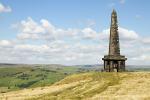
Stoodley Pike
more A war memorial in the Todmorden area
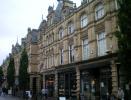
The Halifax Borough market
more The victorian covered market in the town centre
_1.jpg)
Square Church Spire
more The spire is all that remains of this church
_1.jpg)
The Piece Hall
more Halifax's jewel in the crown
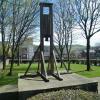
The Halifax Gibbet
more A forerunner of the Guillotine
Halifax Town Hall
more Seat of Local Governance

Halifax Minster
more The centre of worship in Town

Dean Clough
more An industrial powerhouse of the past
_1.jpg)
All Souls Church
more The church of a former model village
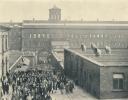
Black Dyke Mills
more An icon on the outskirts of Halifax
back to page above this...
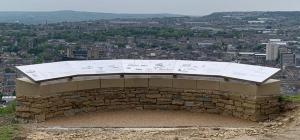
The Centenary Viewing Platform at Beacon Hill
back To celebrate 100 years of service to the town of Halifax we have commissioned viewing platform on Beacon Hill overlooking the town. Situated on the Magna Via, an old packhorse route, the walk to the top is worth it.